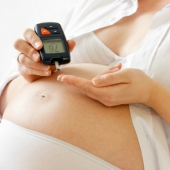Let's talk about IUDs. IUD stands for intrauterine device. It basically means a device that is inside the uterus. The device is a small T-shaped, flexible plastic. They're over 99% effective, making it one of the most effective forms of birth control.
We'll be looking at the two main kinds of IUDs available; copper and hormonal. The non-hormonal IUD is the one that contains copper wire which prevents fertilization. They're effective after insertion and can be used as an emergency contraception within 5 days of unprotected sex. It is effective up to 10 years.
The hormonal IUD contains the progestin hormone levonorgestrel. It takes approximately one week for hormonal IUDs to take affect, so it's not effective as an emergency contraception. It's effective for three to five years depending on the brand.
Dr Allison Hill: "This is a model of the female pelvis. This is the vaginal canal, followed by the cervix, the cavity of the uterus, and these are the fallopian tubes. And this model is actually made to be approximately the same size as a normal uterus. We're gonna place an IUD which is gonna end up right here in the cavity of the uterus.
When we receive an IUD from the manufacturer, it comes in an applicator and it's already preloaded in here. We start off by inserting a speculum into the vagina which is very similar to when you have a pap smear done.
The cervix is then identified and then we slowly guide the IUD through the cervical canal, into the cavity of the uterus. Once it's about halfway into the uterus, we pull back on the device here and you can see that the arms of the IUD start to open, and then we push the IUD all the way to the very top of the uterus.
Once it's there, we then pull back further on the device and this releases the IUD from the applicator, and then we pull the applicator out. This leaves behind only the two strings in the cervical canal, which we then trim with a pair of scissors to be about a centimeter from the cervical opening."
While the IUD's being inserted, most women feel cramps or a small amount of pain but many only have mild discomfort. The IUD can be inserted anytime during a woman's cycle.
Copper IUDs trigger the production of a fluid that includes copper ions, enzymes, prostaglandins, and white blood cells from the uterus and fallopian tubes. This fluid is responsible for killing sperm. Hormonal IUD's release a synthetic hormone levonorgestrel.
It prevents the ovaries from releasing eggs and thickens the mucus in the cervix, which prevents the sperm from reaching the egg. With copper IUDs, possible side effects.
- 3849 views













